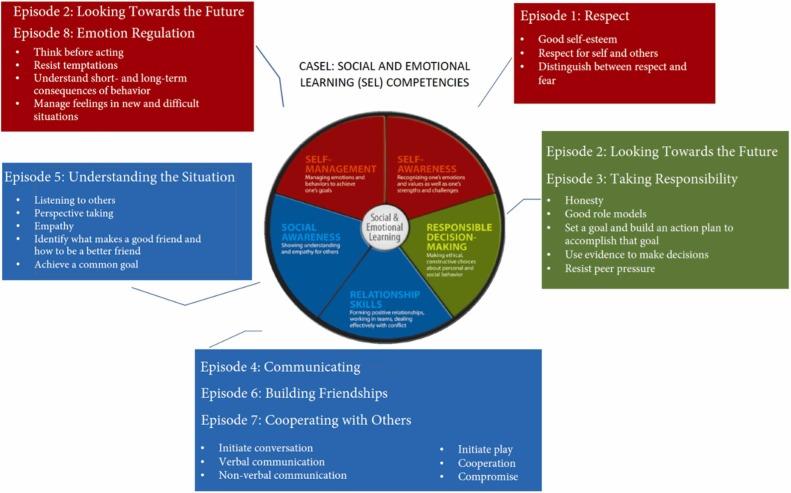—
Exploring the Future of SEL in Schools: Emerging Trends and Next Steps for Social-Emotional Learning
Social-Emotional Learning (SEL) has rapidly become a cornerstone of modern education. As schools worldwide strive to support students’ mental health, collaborative skills, and resilience, the scope of SEL continues to expand. In this in-depth exploration, we’ll uncover the future of SEL in schools, key benefits, emerging trends, practical strategies, and real-world case studies shaping the next generation of emotionally intelligent learners.
Understanding Social-emotional Learning: A Rapid Refresher
Social-Emotional Learning (SEL) is the process through which individuals acquire and effectively apply the knowledge, attitudes, and skills necessary to:
- Understand and manage emotions
- Set and achieve positive goals
- Demonstrate empathy for others
- Establish and maintain positive relationships
- Make responsible decisions
Leading frameworks, such as those from CASEL, highlight these competencies as fundamental to student well-being and success both in and beyond school.
Why SEL Matters: Key Benefits for Students and Schools
The evidence is clear: implementing robust SEL programs in schools yields remarkable advantages. Some of the core benefits of SEL in education include:
- Improved Academic Performance: Students engaged in SEL instruction typically show higher test scores and greater classroom engagement.
- Enhanced Emotional Well-being: SEL supports mental health by teaching students how to recognize and manage their emotions.
- Positive School Climate: Schools with embedded SEL benefit from reduced bullying, less absenteeism, and higher teacher satisfaction.
- Stronger Social Skills: SEL fosters empathy, collaboration, and positive interaction, giving students essential life skills.
Emerging Trends shaping the Future of SEL
As the educational landscape evolves, new trends and technologies are transforming how social-emotional learning in schools is delivered, measured, and sustained. Let’s explore some of the moast promising directions for the future of SEL:
1. Integrating SEL into Core Curriculum
Instead of treating SEL as a stand-alone program,more schools are embedding social-emotional learning across all subject areas. For example:
- Literature lessons that discuss empathy and perspective-taking
- Math instruction involving collaborative problem-solving
- History classes that encourage civic engagement and ethical reasoning
This whole-school approach ensures SEL skills become woven into the fabric of everyday learning.
2. Leveraging Technology & Digital SEL Platforms
The rise of edtech has made SEL more accessible and interactive. Online SEL platforms, apps, and virtual reality experiences are now used to:
- Deliver tailored lessons in self-management and mindfulness
- Gather data on student well-being and growth
- Provide real-time feedback to educators and parents
3. Culturally Responsive and Equity-Centered SEL
Today’s SEL recognizes the diverse backgrounds and experiences of students. Inclusive SEL:
- Celebrates different cultural norms and practices
- Addresses systemic inequities and promotes social justice
- Involves families and communities in program design
4. Expanding SEL Beyond the Classroom
The next generation of SEL extends far beyond classroom walls. Schools are:
- Training teachers, support staff, and administrators in SEL practices
- Engaging parents and local organizations for holistic support
- Including SEL in after-school activities, athletics, and service learning
5. Measuring SEL Outcomes with Data-Driven Tools
There’s a growing emphasis on using evidence-based assessment tools to measure social-emotional growth. This helps schools:
- Track student progress over time
- Refine programs based on strengths and gaps
- Demonstrate program effectiveness to stakeholders
real-World Examples: SEL in Action
Case Study: Austin Independent School District, Texas
The Austin ISD has been a pioneer in district-wide SEL, embedding instruction from Pre-K through high school. Key outcomes include:
- Significant decreases in disciplinary incidents
- Improved graduation rates
- High rates of teacher adoption and community engagement
Case Study: Anchorage School District, Alaska
With a diverse student population, Anchorage’s SEL program focuses on cultural relevance and resilience. Students report feeling safer and more included,and educators note a positive shift in school climate.
Practical Tips for Schools: Advancing SEL Initiatives
Looking to strengthen SEL in your school? Here are research-backed strategies for success:
- Get Buy-in from All stakeholders: Involve administrators, teachers, families, and students from the start.
- Prioritize Ongoing Professional Growth: Provide regular training on SEL best practices and cultural competencies.
- Customize for Local Needs: Design SEL activities that reflect the specific backgrounds, strengths, and challenges in your community.
- Leverage Data and Feedback: Regularly gather student voice and assessment data to fine-tune programs.
- Model SEL as Adults: Educators who demonstrate self-awareness,empathy,and collaboration foster these traits in students.
The Road Ahead: Challenges and Next Steps for SEL
Despite remarkable growth, SEL still faces hurdles on its journey into the future:
- Consistency: Ensuring SEL is embedded and sustained across all grade levels
- Funding: Securing resources for training, materials, and technology
- Assessment: Developing reliable ways to measure complex SEL outcomes
- Equity: Making sure SEL is inclusive and meets the needs of all students
Next Steps: For schools and districts ready to take SEL to the next level, focus on:
- Aligning SEL with academic goals and school improvement plans
- Investing in high-quality, research-based SEL curricula
- Building supportive partnerships with families and communities
- Advocating for SEL in state and local education policy
Conclusion: A Future-Ready Approach to SEL in Schools
The future of SEL in schools is shining, driven by innovation, inclusivity, and a shared commitment to student well-being.As districts embrace new SEL trends,integrate emotional intelligence into core learning,and focus on holistic growth,today’s students will be better prepared to thrive—emotionally,academically,and socially—in a rapidly changing world.
by staying informed about emerging SEL practices and taking practical steps to embed them school-wide, educators can ensure every child develops the essential skills to lead with empathy, resilience, and purpose. The next chapter of SEL promises not just improved educational outcomes,but empowered,compassionate citizens who can shape a better tomorrow.
—

